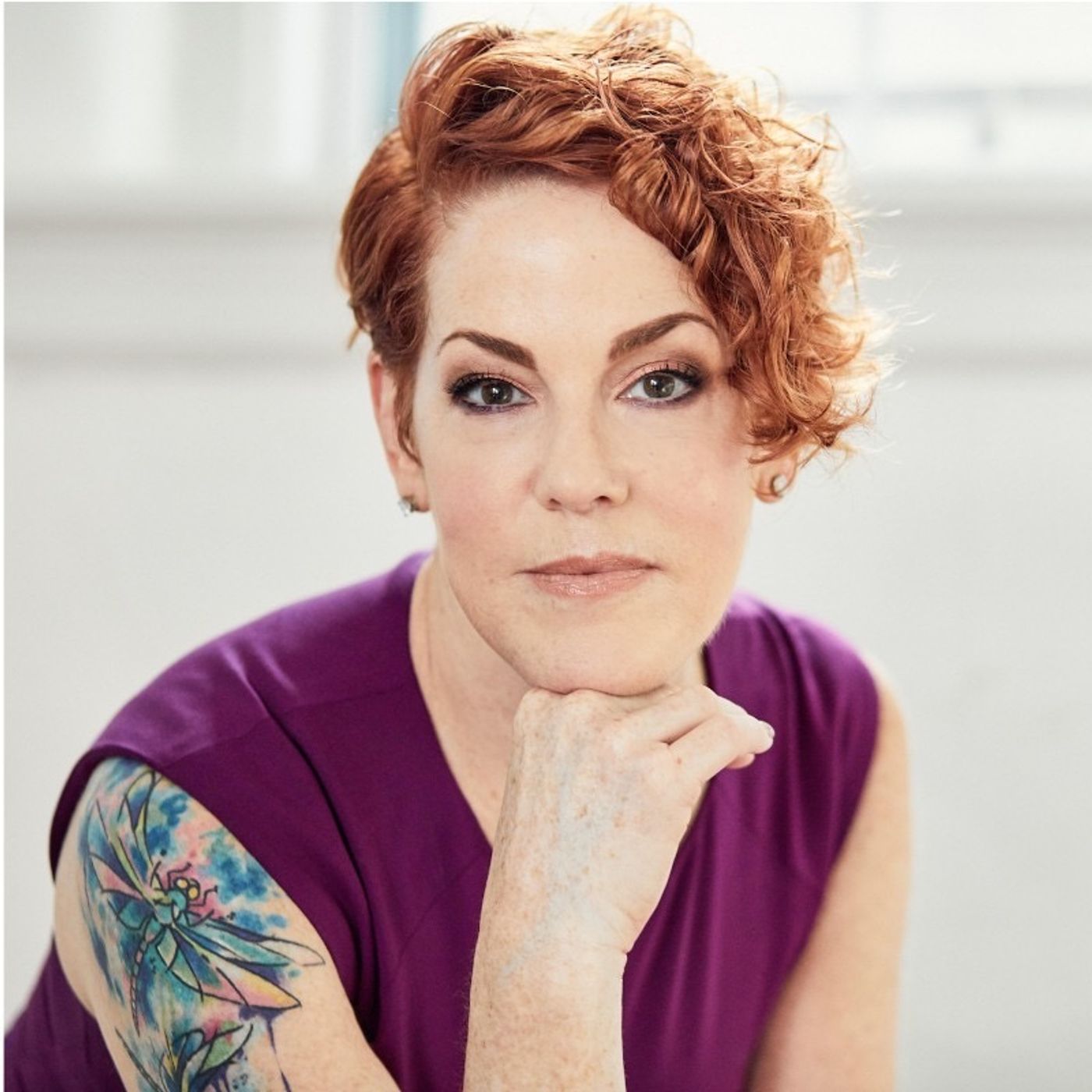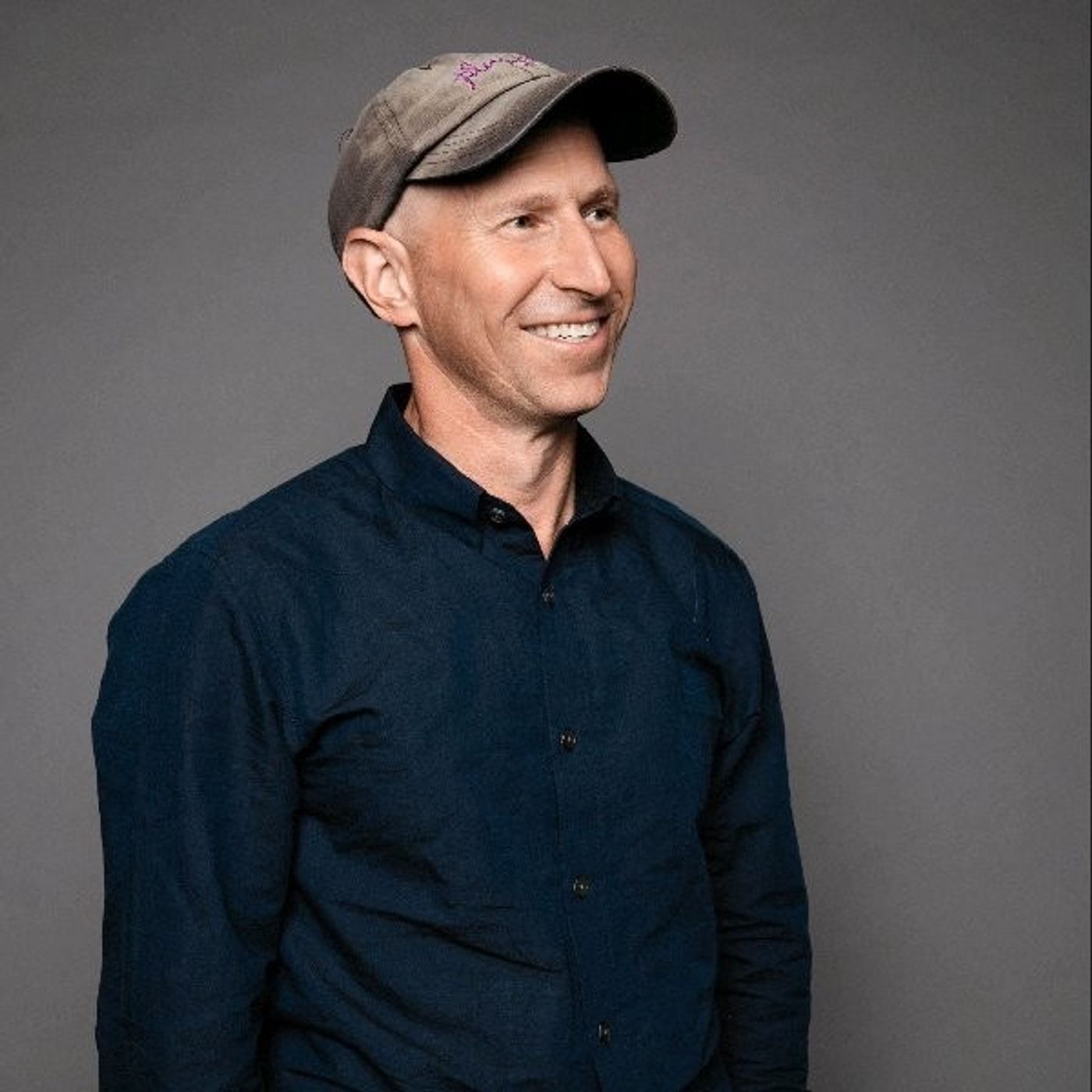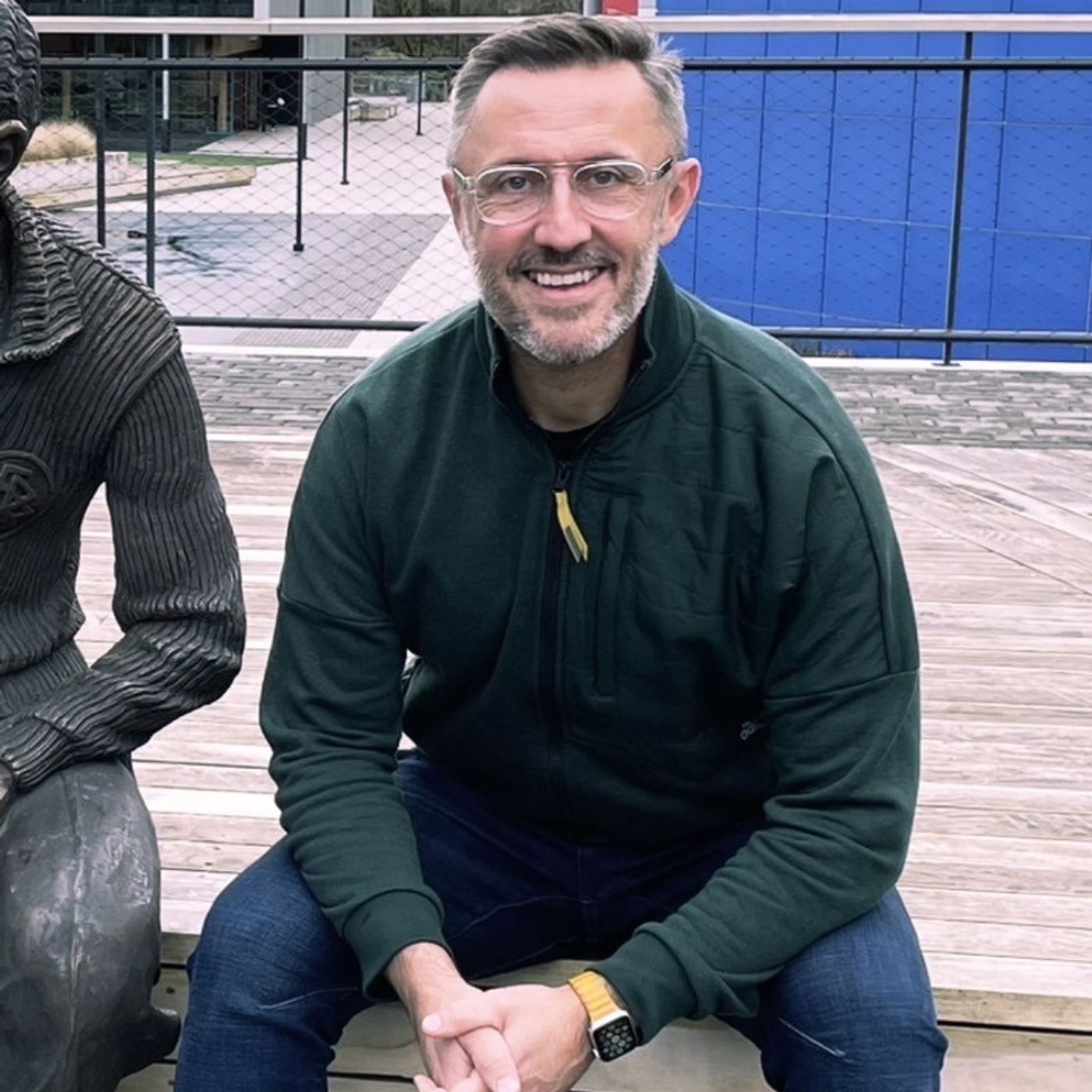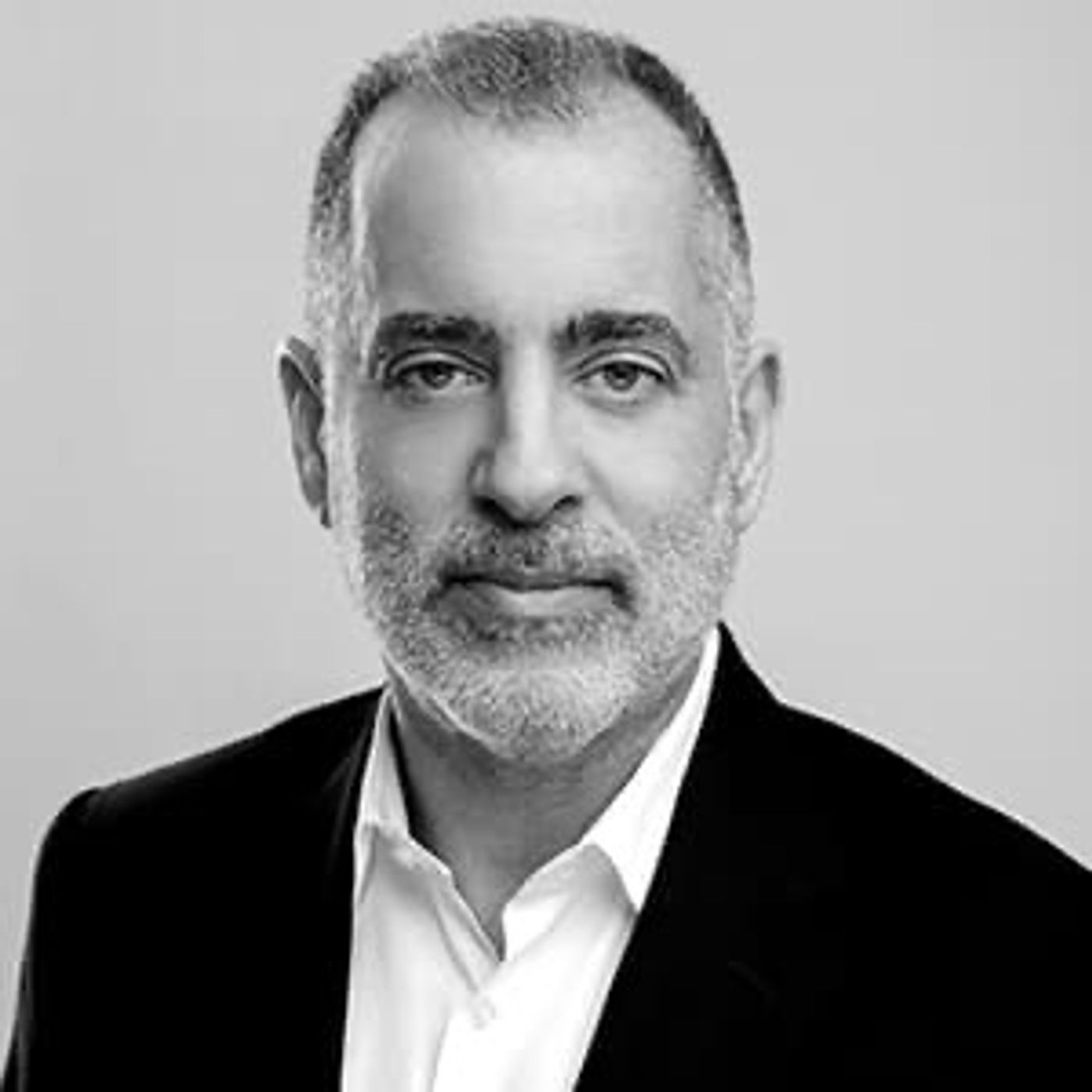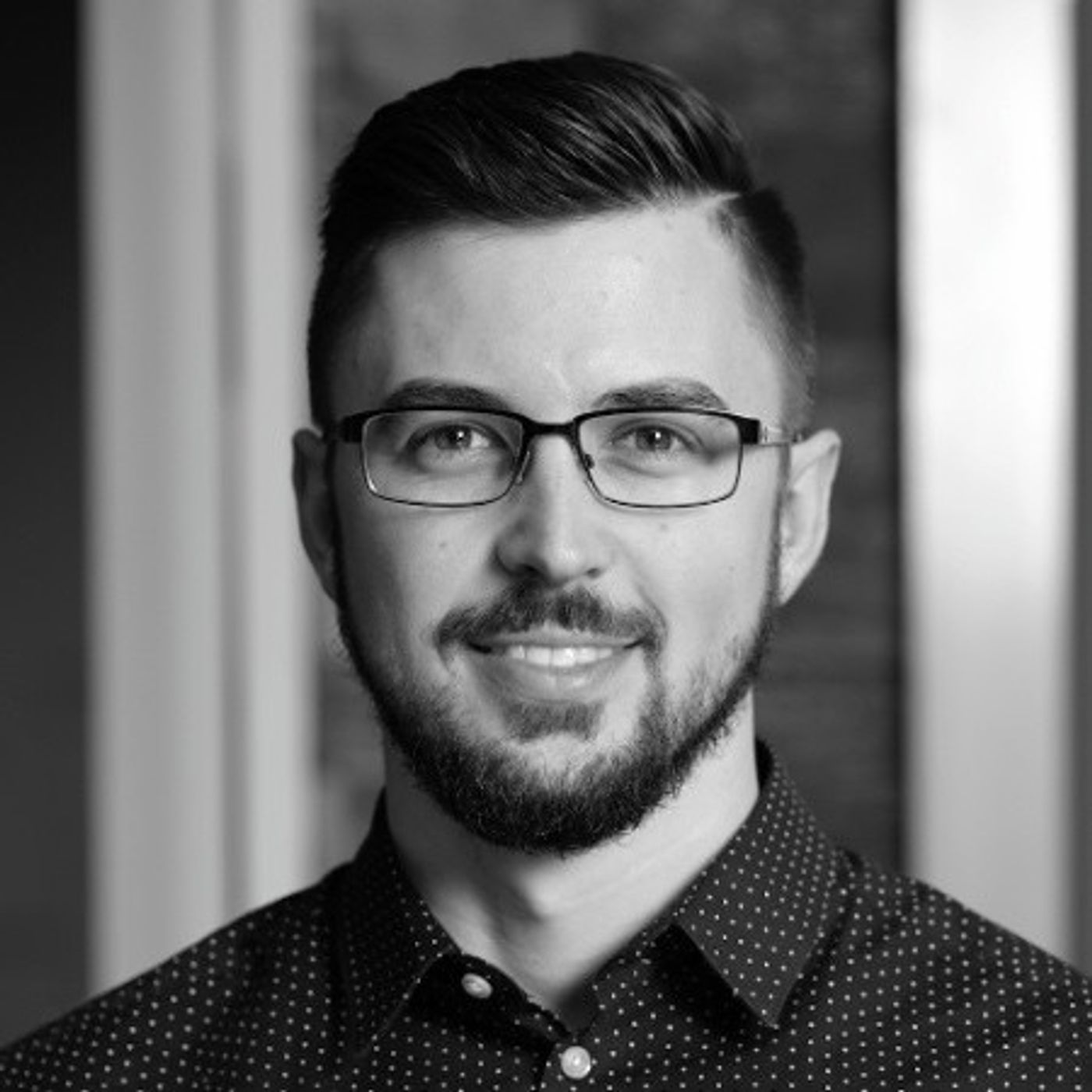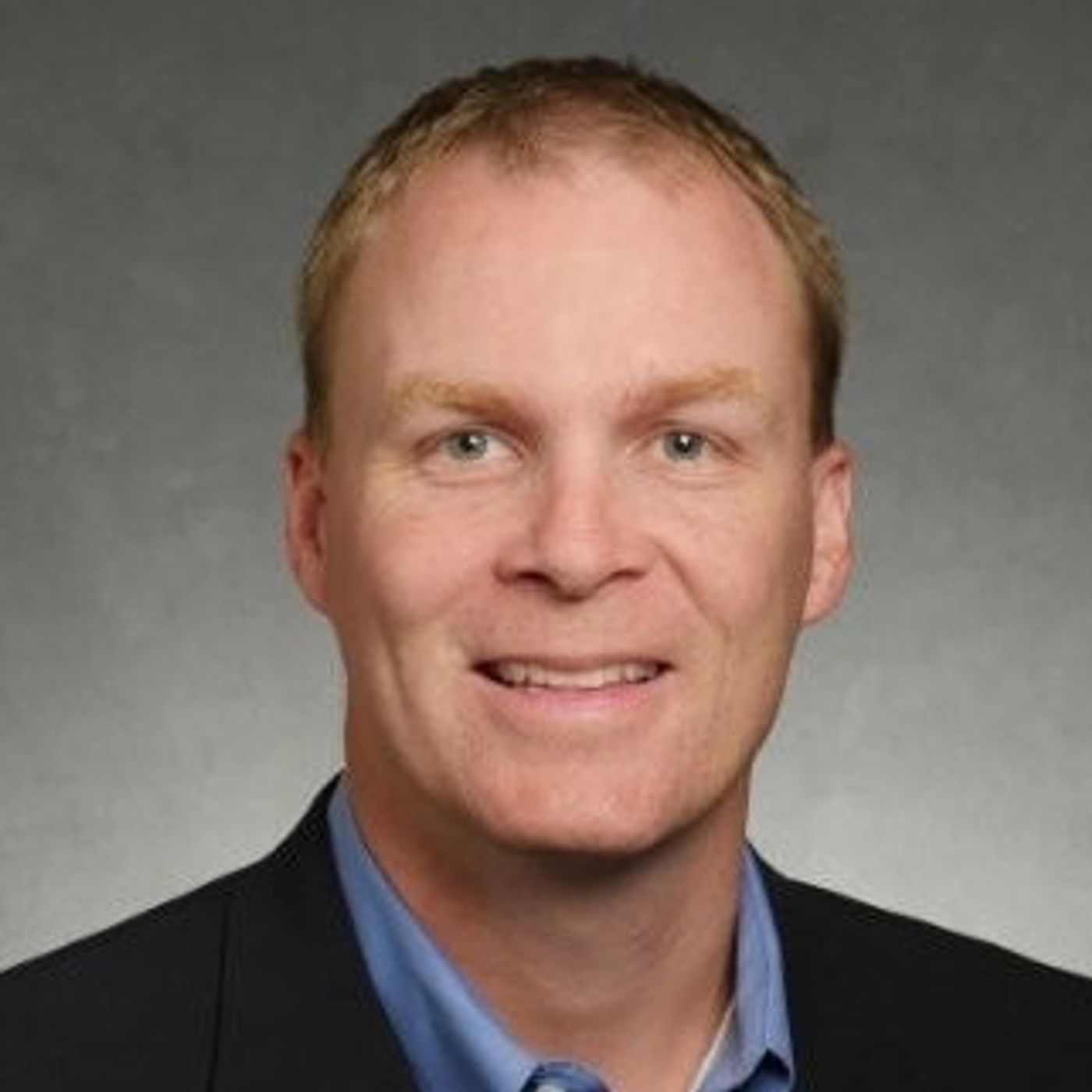Discover Fortune's Path Podcast
Fortune's Path Podcast

56 Episodes
Reverse
2:12 - Why she became a self-pay patient after two medical bankruptcies. 9:22 - How to navigate self-pay by removing fear-based thinking (I must have health insurance) and negotiate with every single healthcare service you pay for. 11:02 - The freedom that comes with leaving health insurance behind and embracing self pay.11:58 - How hospital foundations and patient pay advocates have emerged to embrace (somewhat) self-pay.12:49 - As a high earner, she does not use these foundations, but negotiates to pay her bill. She's also a member of Christian Healthcare Ministries (CHM), a health cost sharing ministry. 13:20 - How CHM works - you become a member, pay a monthly fee. When a healthcare episode arises, you access CHM to get your healthcare bills paid, or shared. 15:14 - Sloane details the self-pay patient journey, how self-pay doesn't trickle through to all areas of the healthcare industry, and how to educate each sector about self-pay.22:50 - How to ask for the self-pay rate as a patient.25:00 - Where Sloane negotiated for care from one provider that was 75% less than what another provider quoted. 26:35 - How physicians are fairly knowledgeable about self pay, but those in their business offices are not. They are trained to work with insurance. She packs her "patience and grace" to ask them to do something that is unusual. 29:25 - Tom pivots the conversation to how Sloan copes with a diagnosis of a terminal illness (at age 23). She doesn't let it define her, and looks at her condition as a chronic illness. 30:23 - How Sloane and Tom agree that it is the dying person's responsibility to prepare the living for their own death. 34:14 - Why doctors ignore DNRs (hint: it has to do with litigation). 35:10 - Tom laments that modern Stoics don't talk suicide the way the original Stoics did - it is the last vestige of our wills. 37:50 - Sloane shares her grandmother's advice about friendship: you really only need 6 friends in life; 3 on one side of the casket, and 3 on the other. 38:10 - The extreme rarity of having one really close friend. 40:00 - Shifting to business, how she found herself in Nashville's health tech scene. Pre-pandemic, it was crowded, healthy and vibrant. Backed by Nashville and nationwide private equity and venture capital firms, and also supported by local institutions like the Nashville Entrepreneur Center, Nashville Healthcare Council, local family funds, and others, founders were getting a lot of support. 41:13 - When founder-led companies become responsible for creating shareholder value. The trajectory to create shareholder value is a big change, and she learned how sales and marketing played such a significant role in creating that value. 42:35 - Creation of her secret sauce: the strategy/methodology/execution of marketing to build to exit, and understanding how to make quick pivots as needed. 44:02 - What healthcare doesn't talk about post-pandemic: the rise in chronic disease, chronic care. Fortunately, many tech companies have come forward to begin to address this issue, but the exits are not as speedy as they once were.45:29 - The role of a strategic story in an exit, and how your fly paper is still whether or not you created shareholder value. But healthcare needs to re-think intellectual property.47:00 - The other way to re-frame and look at shareholder value: the customer relationships you create. If you can own a swim lane in the market, and really own it well, that has enormous value. 48:16 - How mergers often destroy value by devaluing the brand and the culture. 51:24 - Who shaped her marketing philosophy, Marty Neumeier, who was Steve Jobs' brand mentor. She believes, as Marty maintains, that a brand isn't what you say it is, it's what your customer says it is. 54:17 - How she loves founder-led companies, and how she gets so much more out of it than what she put into it. Her emotional paycheck gets cashed every time she sees someone get a check they never thought they would get.
Takeaways: Selling into healthcare takes a long time - for good reason.Having worked in both the education and healthcare market selling software, both are difficult markets. While healthcare has more budget than education, both take forever to make a decision.Young entrepreneurs should think about getting some enterprise-level experience before starting a company.How entrepreneurship is like parenthood: you don't know it until you try it.Early technical decisions can have an outsize downstream impact, and is perhaps more important than go to market activity.Moore's most important job as CEO was first to drive revenue, then later to set the company vision and cultivate its culture.In his current role as an advisor, he stresses operational discipline over founders habits.The number one attribute for entrepreneurial success? Being able to work through ambiguity.Managing customers and raising kids both involve cultivating their independence from you.Jason's favorite saying? "People gonna people." It's not just negative - people also do amazing things. But just know that folks will disappoint you at some point.Advice to his 23 year-old self: Push through the hard times and keep people close; don't lose your focus on them.
Takeaways: Why it's not so much that Eric is a believer in alternative assets, but that he believes in a diversification of investment portfolios. That illiquidity of alternative assets is a feature, not a bug. The legal challenges of getting Alto started took longer than the anticipated technical challenges of simplifying the workflow processes of alternative investments.The 'greater fool' theory in investments.How public markets are no longer being driven by the fundamentals of investing and operating.Alto's three levels of operation: a software business which owns a trust company and also owns a securities company.'Historically good returns' in alternative investments = returns that exceed public market returns.Bitcoin, like money, is an invention based on faith.What comprises 'luck' in business: hard work, opportunity, and a third vector: remaining open to what's happening in the market.The cost - and there is one - to entrepreneurship.
TakeawaysUnderstanding the basics of circuits and quantum computing is essential in comprehending the potential of AI.Transparency and explainability are crucial in AI decision-making to ensure accountability and mitigate bias.Data curation is a critical step in developing AI models to avoid unintended biases and improve accuracy.The application of AI in mortgage and loan decisions requires careful consideration of fairness and ethical implications. Higher education is correlated with earnings, but its correlation with credit worthiness is uncertain.Being completely blind to factors like race and gender in the hiring process may be challenging, but efforts can be made to represent everyone equally.Considering each subpopulation separately and simplifying the hiring process can help ensure fair representation.Ethical dilemmas arise when ignoring correlations that have a strong statistical relationship with outcomes.The application of AI in the hiring process can be effective when combined with human decision-making and a structured, data-informed approach.Chapters00:00Introduction and Recording Confirmation00:38Background in Physics and Engineering03:13Research in Material Design and Quantum Physics04:26Understanding Circuits and Quantum Computing06:37Transition from Research to Business11:14Impact of Ideas and Einstein's Equation13:14Ethics and Risks of Artificial Intelligence17:15Applications and Limitations of AI20:39Ethics and Bias in AI Decision-Making25:24Transparency and Explainability in AI29:29Data Curation and Bias in AI Models34:07AI in Mortgage and Loan Decisions38:15Fairness and Ethics in Lending38:41Correlation between Higher Education and Earnings39:21Challenges of Being Blind to Race and Gender39:49Considerations for Representing Everyone Equally40:24Ethical Dilemmas of Ignoring Correlations41:08Product Development and Answering Ethical Questions41:29Simplifying the Hiring Process42:02Data-Informed Recruiting and Hiring43:14Using Data to Find the Right Match44:24Simplifying the Workflow for Recruiters45:16Focusing on Skill-Based Factors in Hiring46:31The Validity of Resumes in Predicting Performance47:25Factors in Deciding a Good Hire48:15The Tricky Nature of Job Descriptions49:05The Importance of Skills and Job Descriptions50:03The Value of Experience and Starting a Business51:09The Role of Emotion in Decision-Making54:02Introducing Scientific Process into Hiring55:53The Application of AI in the Hiring Process56:58The Human Element in Decision-Making58:16Applying the Scientific Method to Business Problems59:18Learning from Past Research and Being Skeptical01:00:45Checking Assumptions and Being Discerning
Norbert talks about how Adidas starts its shoe manufacturing process, beginning with a business unit who outlines the market need in a comprehensive brief. Then, a designer group begins experimenting with colors, materials and textures. "There's 250-350 operations that need to happen to put one pair of footwear together, so it's a long process... taking up to 16 months," says Norbert.Every new material and material supplier is tested, based on internal standards. Once it moves to being manufactured on the production line, further testing and checking take place. Some analogies and differences - software vs. manufacturing: multiple suppliers and producers are comparable to software engineers writing code all over a complex systemthe value of eliminating variationunlike software, there's no opportunity to "fix it later" in manufacturing, which makes it essential to build a highly functioning quality processquality and compliance can't be an afterthought in manufacturing software and manufacturing need to focus on root cause analysis to build the most robust quality management processrisk analysis is all about error tolerance
How can a dog get you through bad times? How does selling door to door to non-English speakers prepare you for a career in finance? What should you look for when investing in real estate?
These are some of the questions we ask Rich Boucher, veteran real estate investor, dog lover, and sales expert. Rich is the Senior Director, Capital Markets for Alpha Investing, a private equity real estate firm providing investors with access to institutional-grad assets with compelling, risk-adjusted returns.
Rich talks how Alpha investing chooses properties, why they only invest in properties that already exist, why high interest rates haven’t hurt his business, and why he still wants to sell face to face, on this episode of the Fortune’s Path podcast.
The Fortune’s Path Podcast is a production of Fortune’s Path, where we help technology businesses create products that generate monopoly profits. Fractional product management. Product leadership coaching. Competitive Intelligence. Find your genius with Fortune’s Path.
Tom talks with Chris Boyd, former VP of Product at Nashville unicorn Built Technologies and now head of product for Trunk Tools, a construction fintech startup. At Built and now at Trunk Tools, Chris is focused on solving the skilled labor shortage by enabling project leaders to increase workforce productivity, safety, and profitability by aligning incentives from top to bottom.Chris joined the Fortune's Path podcast recently from Stanford University, where he was attending a venture capital workshop for promising early stage businesses, to touch on a variety of issues like:What’s the best way to incentivize workers? How does Trunk Tools provide immediate financial benefits to them?How do you bring technology to construction and improve outcomes for everybody?What is it like to build a technology company from scratch?
Ray Guzman, CEO of Switchpoint Ventures, talks about how he joined the military at 17 years old, met his wife shortly after joining the military, and life got really real, really fast. Ray got involved in computer training with a focus on automation. Ray and his wife invested in a commuter in 1995 and became early adopters of technology. Ray tells Tom what non-technical people should know about AI. AI does a good job of stitching words together. What is sometimes lost in that is the sequence of those words don't have an appropriate meaning. The answers we get from AI, while sounding authoritative and correct, may very well be wrong, and in some instances completely manufactured by the AI. Tom and Ray discuss the problems with AI using uncredited sources to create its outputs. Ray tells a story of how ChatGPT rewrote a biography he gave it and did a better job than he would've while a friend of his asked ChatGPT to write his biography from scratch and got a response that was fictitious. Ray tells how he's learning more about mindfulness and being intentional about rest. Tom tells Ray about how his dog Margaret inspired him to become more mindful. Ray tells Tom about his spiritual practice and reading scripture every day. Tom asks Ray about how he balances his ambition with self-acceptance. Ray tells about he founded his venture studio Switchpoint Ventures and how they're working to make a difference in healthcare and other industries.
Andrew tells Tom about his book The Humility Imperative. Andrew tells how he likes speaking about and teaching on leadership, and how the book came from requests from students to write down his message. Andrew describes how Jim Collin's Good to Great influenced his thinking on humility in business. Andrew tells how ambition directed on behalf of a cause is much more powerful than personal ambition. Andrew tells how, even now as a $20m+ business, small clients are just as important to FortyAU as they were when the business started, and serving small clients is one way FortyAU stays true to its values. Small clients have been critical to helping FortyAU weather different economic storms and grow in all conditions. Tom asks how Andrew empowers his engineers to have an ownership mindset. Self managing teams work best for FortyAU, where the pressure to perform comes from within the team. Andrew encourages his engineers to care about business outcomes and the people effected by the project more than just getting code written. Andrew talks about how software is a living product that's always changing. Tom tells how good enough and available is better than perfect and not available. Andrew says that collisions with customers make software better. Andrew tells how important it is to get feedback from users and embrace change management. Andrew tells how morale and productivity often go down in an organization when new software is introduced. Andrew tells how his company built a tool that transformed a paper based process into an automated process, but got a lot of pushback from the customer that the software was buggy when it was not. After introspection, the customer realized they had botched their rollout and the quality of the software was high. Tom talks about how it's impossible to avoid user testing—you either do it before launch or it will happened after launch. Andrew says humility works the same way you are either humble, or you’ll be humbled by circumstances. Finally, Tom asks Andrew how he wants his kids to think about business.
Luther Cale, Vice President of Clinical Programs at Healthstream, the leading healthcare talent management and clinical readiness solution, talks with Tom about how he enjoys living in Ecuador and raising his daughter there. Luther has been working from other countries for over 15 years. He tells us when it's important to be back in the office and when it's better to be remote. Tom talks about the difficulty of building political capital in a remote work environment. Luther tells how hybrid work works best. Tom and Luther talk about using virtual reality technology in CPR training with the American Red Cross. Tom and Luther talk about the opportunity and difficulty of using all the data virtual reality collects to show learning results. Luther discusses how data needs to be managed and protected to prevent misuse. Tom and Luther discuss the management of innovation councils. Tom and Luther talk about the strategy of loss leaders. Tom asks what Luther would do differently if he could restart career. Tom and Luther discuss selling into hospitals and whether saving lives is in the economic interest of a hospital. Luther shares his hope that healthcare can become more about remaining healthy than recovering from being sick.
Long time designer, distance runner, and product leader Chris Bradle tells Tom about how his career as an athlete has effected his work in business. Chris suggested that the difference between winning new business and losing is being genuine. Tom asks if it's even a good idea to be authentic at work. Tom tells a story about getting laid off and asks if professionalism is like putting on a mask. Chris says putting on a mask is terrible. Vulnerability is not about being emotional, but about being yourself. Chris says he always knew what he wanted to do but he didn't know who he was when he was young. Tom tells how we make sense of reality by layering stories on top of what we see, but those stories are insufficient. Chris tells Tom how stories create shared meaning and understanding between different views of the same event. Chris talks about good advisors he's had and how their wisdom can help you know when it's time to exit a business. Chris talks about collecting proof before investing in a product, and how it’s a bad idea to fund product discovery. Chris talks about how sometimes it's better not to have money because the constraints make you focus on what you're best at. The pressure of constraints helps you find your scale. Chris talks about how money makes you hire people often before you have the systems in place to support all those people. Chris tells how he got involved in product management. Chris says he was trained to solve problems visually and how he now applies that process to solving problems in his product management practice. Chris didn't know he was prating product management when he built his first start-up. After he sold his business, he had to choose a lane, and chose product management. Finally, Chris talks about how success is not about results but about throwing everything you have into your task.
Nigel tells Tom about his company Foresight and how it helps other B2B SaaS companies make their customers successful. Nigel didn't set out to be an entrepreneur. He worked at DealCloud with his co-founder when DealCloud went from series A through acquisition and finally to IPO. Nigel worked in sales there but found that unfulfilling. He moved to account management and focused on giving clients more value so they would be more likely to renew, tolerate price increases, and buy additional products. While in customer success Nigel discovered a problem that had no solution and then left to create a company to build that product. One thing that drove Nigel to start his own thing was the fun he had in a small company. Instead of leaving DealCloud to go through the same process of series A to IPO, his partner convinced him to create their own company to create Foresight to address churn in SaaS. Nigel talks about how enterprise SaaS is based on managing individual accounts and how that process can be very manual. Nigel tells how account management is often reactive and fire fighting rather than pro-active and strategic. Nigel's a-ha moment came after making a presentation to a large customer who loved his software but wanted to get best practices. Nigel is able to get good response rates on assessments because they come as part of another process like a sales meeting that's already scheduled or a renewal that's coming up. Tom and Nigel talk about how a tech business can start as a services business, but Foresight was not one of those, and that's why he needed front end investment to get his business going. Tom and Nigel talk about the differences between building a business that sells a dream and a business that delivers obvious value from the start. Finally Nigel tells Tom what he plans to do with the money from his next round, which he is in the final stages of closing.
How do you manage and measure product managers? What is the Shape Up methodology and why should you care about it? How do you build a process that creates great products?These are some of the question Tom asks sales and product management veteran Amin Haidar, a six year veteran of Asurion, one of the largest and most profitable private tech companies in America. Tom first met Amin while he was still in college, working full-time at Healthstream while getting his degree. His intelligence, ambition and work ethic made a great impression on every one in leadership, To, included.Amin and Tom discuss how the Shape Up methodology works, how to choose what ideas to invest in as a product manager. Amin discusses how Asurion time-boxes work into five week chunks and focuses their teams work on one thing at a time with seven person teams. Amin talks about how avoids client commitments and manages his now timeline, how he manages urgent requests, how he judges the effectiveness of his product managers, and how he gives feedback in the moment. Amin describes product management as the art of creating a process that creates great products. Amin talks about his transition from a start-up to a large mature organization like Asurion. Amin talks about his style as servant leader and when he knows he needs to be directive and what he does to support his reports when that happens. Amin talks about how he encourages his reports to question him how he tries to have no ego with his teams. Amin talks about leadership’s job is to make everyone else successful and how he creates a context for making decisions by keeping things objective as much as he can. Finally, Tom andAmin talk abut the meaning of success and raising kids.
26 year old Walter Hindman tells Tom how he became CEO after losing his job during COVID when his offer was rescinded. Walter tells Tom about Junkdrop Nashville, his junk removal business that gives reusable material to charities. Walter explains why integrity is important to his differentiation. Walter does not give his donors a tax break, but he does show them where their reusable items end up and who they benefit. Walter talks about his dream of growing Junkdrop through franchises. Tom digs into the economics and what stands in the way of scale for Junkdrop. Walter talks about who he hires and how he finds them. He talks about how important having fun is to his business. Walter talks about having to fire people. Walter tells how important earned media like being on the Today show and being written up in the Tennessean has been to his growth. Walter talks about using Google ad words. Tom tells how he felt taken advantage of by another junk removal business. Walter tells about how 1-800-Got-Junk revolutionized the junk business with their simple value—point and it’s gone. Walter has taken that idea and added the charity angle so people can feel good about where the junk goes after it’s picked up. Tom talks about creating a junk removal as a subscription business. Walter talks about why he started his business and how he was able to pick who he’s competing against. He tells how he had no capital when he started and how he coordinated with a local charity and used his own pick-up. Walter talks about hoarder houses and how strange the work can get. Walter tells how obsessed he gets when he loses a bid. Tom compares competitive intelligence to a musician who gets inspiration from other musicians. Tom describes how he was inspired by his old boss who was generous with his time and would talk to anyone who had a business in health tech. Walter closes out by telling us what he wishes he knew when he started the business that he knows now.
Teja Yenamandra, CEO of gun.io, a staffing and placement firm for software engineers, talks about why he took money after boot strapping his business successfully. Tom and Teja discuss the future of software engineering, automation, and ChatGBT. Teja sees automation being used for invoicing and other parts of running his business, but not for writing code just yet. Tom talks about how insight hasn’t been automated yet.Teja has been a CEO for ten years, though he’s less than 40. Teja loves working with people and solving problems. Teja describes how business is a canvas for solving problems, and that solving problems and making money are the most fun parts of being a CEO. “People assume I’m smart because I’m a CEO, so I’m challenged less because I have this silly job title,” says Teja. Teja talks about Brazilian Jiu Jitsu and how he enjoys it as a domain where nothing is expected other than respecting others. Practicing Jiu Jitsu helps Teja get space away from work to improve his problem solving. Teja talks about how he obsesses about problems even though he knows intellectually that getting away from a problem for a while sometimes helps solve the problem. Tom talks about how meditation helps him when he’s stuck even though he can never quiet his mind. Teja tells Tom what’s the right cycle on which to update his clients about the progress of their engagement and how gun.io prevents surprises and avoids conflict with its clients. Teja discusses the psychology of raises and how no matter how much we’re paid, we get aggravated if we go a year and don’t get a raise. The conversation gets cut off when Teja loses power because of tornado winds in Nashville, but everybody ends up OK.
Long time product manager Cooper McGoodwin talks about priotizing features, delegation, and potty training his two and half year old. He and Tom also discuss the pitfalls of scrum and agile, why roadmaps are necessary but overblown, why the only roadmap that matters is the one you can keep in your head, and how prioritization should follow moral principles. Tom makes a case that bad user experience and technical debt are ethical dilemmas because people suffer for them. Cooper talks about how he needs a defensible position to make a priority decision. Tom says a lot of what we do is guess, and Cooper talks about how an OKR process leads to better data collection. Cooper tells about how he's sometimes embarrassed by his own prioritization at sprint demos.
Ben tells the story of how he started his sales consultancy. Ben talks about getting laid off and how he helped his team, many of whom were also laid off, through the process. Ben says if you're not getting pulled into working for yourself then maybe you shouldn't do it. Tom talks about how anyone who is in the arts like an actor or a writer is in business for themself. Ben and Tom talk about how getting your first customer is what marks the start of any business. Tom and Ben discuss how we take what we're good at for granted and often give it away. Tom tells how effort is not correlated with value. Tom and Ben talk about how paying for a big outside name helps win internal arguments you can't win on your own. Ben and Tom discuss private equity minders and dumb questions from smart people. Ben talks about the managing by spreadsheet crowd and why they are often over valued. Ben admits revenue levers are critical to understand but not sufficient for success. Ben quotes Marty Cagan about how quantitative data tells what's happening and qualitative data tells why. Ben and Tom discuss how to impress someone by doing them a favor. Tom tells how his mother-in-law Betty has a super power for listening and putting people at ease and how that power translates to business success. Ben tells how he interviews people and what he looks for in sales people and why he loves YouTube. Ben asks people, “How do you know you work hard?” to discover if someone is outcome motivated and competitive and what kind of feeling to they have for their own effort. Tom ends the interview with discussing resistance, a concept Steven Pressfield writes about in his book “Do the Work.”
Katie Reilly, long-time product management leader, describes how product management is the glue between technology, sales, and go-to-market and how any organization can benefit from product management. Katie and Tom discuss how the discipline of product management is needed to make sure a product meets the needs of the market. Tom asks Katie how she applies product management to her own life. Katie tells how winning is when all boats rise - helping others achieve outcomes and how improving the offering of a business leads to better outcomes for the business. Tom and Katie talk about how parenting is like running a start-up. Katie talks about listening first and making a decision based upon those inputs. Katie tells why she loves product management, how it's central to a business but always has new challenges, and how having a direct impact on the business is important to her. Tom and Katie talk about kids and sports and having fun. Tom suggested not making kids play sports if they are not good at sports. Katie tells how series A and series B companies are where she has the most fun. Tom asks Katie about how to close the gap between founder vision and what customers want to do. Katie talks about prioritization and creating business cases for development, building a customer success team to manage inbound requests and to do outbound support and research, how she assess product managers, how she helps an organization move from web to mobile, and why knowing why something needs to be done is so important. Finally, Katie tells how she wishes she had thought bigger with her start-ups even though things worked out great.
Robert Carroll, successful entrepreneur and product leader, tells Tom about his journey as a father and how he’s approached different stages of his career based on his personal needs. Robert tells about an early digital video product he built that sold for $300,000 a unit, and then discusses how a technical advantage can evaporate quickly. Tom asks if it's better to be consistently bad in software interfaces than to be uniquely good. Robert talks about how markets define standards like the QWERTY keyboard. Robert tells about creating one company to help people with physical disabilities use computers effectively and another one that helped Fortune 500 companies apply principles of product management to their sales processes. Tom and Robert talk about the psychology of pricing and why companies choose expensive options. Tom asks Robert how he decides between self funding and getting outside investors when he starts a new business. Robert talks about how understanding intent when founding a business is critical for knowing how to fund the business. Robert tells about the founding of his three businesses and how different ideas about what he wanted to achieve affected each. Robert tells how product managers need to understand the capabilities and deficiencies of the technology their products use. Tom and Robert talk about learning styles and teaching strategies, managing technical teams, and being a servant leader. Robert tells about defining clear goals for teams and his resistance to "embracing ambiguity" instead of being clear about objectives. Finally, Robert talks about being in the “fourth quarter” of his career and how he's defining what he wants to do next.
John Farkas, founder of Golden Spiral Marketing, tells how his first job working in a hardware store prepared him for a career in marketing. According to John, marketing is largely about helping people find the right tools to get a job done. John talks about how his first career in theater led to the founding of his digital agency. From theater John learned there are many different ways to get an idea across, and how important audience interactions are to communication. John followed his love of theater into production and directing. Theater production led to corporate events which led to building websites for businesses. John is a student of pragmatic marketing and believes "our opinions, while interesting, are irrelevant." The customer has the one opinion that matters. Technologists have to imagine the world in the way it ought to be while building a bridge to where users and customers are today. Marketing tells the story of how and why people should "cross the bridge" to the new way. John tells Tom to create value with his marketing. "If we're going to put a blog out, we better learn something when we write it," says John. “Do research that adds to your own knowledge and then share that new knowledge with your audience,” is John’s advice for content creators. Tom asks John if activity is more important that content quality. John says social media allows us to have fun with marketing, but the end goal of marketing is serious: value creation. Tom asks John what to look for to know that a marketing spend is worth the price. John says product information takes a long time to show any return while valuable information can attract an audience. “You have to have valuable information to give away if you want to succeed in digital marketing,” says John. Tom asks John about running a family business – John’s son is the leader of creative at Golden Spiral. John tells how working with family makes you smarter but requires a lot of discipline around respecting boundaries. Candor is essential for making the relationship work. Finally John talks about differentiation for software products and the importance of how value is delivered when features between products are similar. “If you understand who you are and what you bring, and you understand it extraordinarily well, you’re going to see results.”


